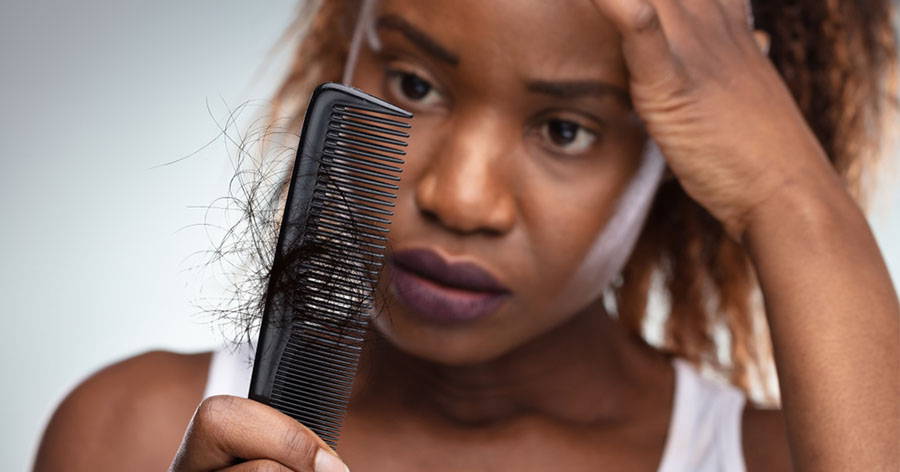Source: By Andrey_Popov
Photobiomodulation therapy or PBMT is an alternative treatment therapy that applies low-level laser light to the skin surface. PBMT is also referred to sometimes as Low-Level Laser Therapy or LLLT.
For decades, PBMT has been used to promote wound healing, reduce inflammation, and repair nerve damage. Likewise, PBMT’s healing effects on skin cells and tissues also benefit hair follicles, making for a promising hair restoration treatment. While different skin tones and hair textures may respond to hair restoration treatments in different ways, there is objective evidence opining that Afro-American hair responds to the healing effects of PBMT in much the same way as other hair types and textures.
What Is PBMT?
Hair follicles age and become damaged just like any other cells in the body. Harsh hair care products, medication side effects, and underlying health conditions can weaken and eventually cause damage to your hair follicles over time. When this happens, the natural growth cycle that promotes hair growth suffers.
PBMT has biological effects on the body’s tissues through its ability to interact with individual cells and jumpstart the chemical processes that support cell health. The low-level laser light put out by PBMT is absorbed by hair follicle cells. These interactions cause cells to expel nitric oxide, a gas that builds up inside cells that undergo stress from injury or disease. The more nitric oxide a cell accumulates, the less oxygen it can take on.
Ample oxygen supplies are essential to cell metabolism and energy production for hair follicles. In effect, PBMT works to promote healthy chemical processes inside hair follicle cells, which helps restore your cells’ natural building and repair processes. As cells become healthier, hair growth cycles can resume as normal. Ultimately, these are biological interactions that occur regardless of skin tone or hair type.

How to Reverse Hair Loss From Medication - Tips and Advice
How Does Dandruff Occur & How Can I Manage It?